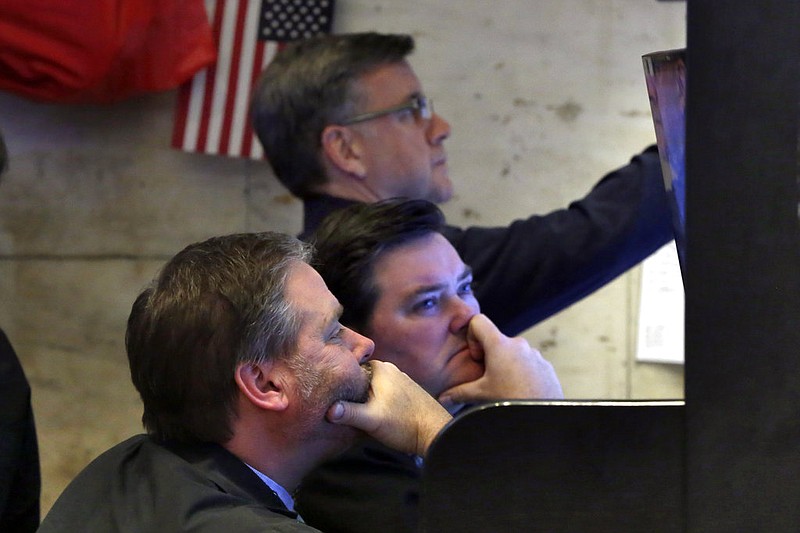Markets fell sharply for the second straight day Monday and erased gains previously made in 2018. However, local financial advisers preached patience as the market undergoes a long overdue correction.
The Dow Jones Industrial Average fell 1,175 points Monday - 4.6 percent to 24,346 points.
The Standard & Poor's 500 Index fell 113 points - 4 percent to 2,648.94 points - and the NASDAQ Composite Index fell 273 points to 6,967 points - 3.7 percent.
The Dow closed down 666 points Friday as Treasury yields rose, causing concern inflation might rise too quickly. The combined losses from Friday and Monday erased a previously stellar start to the 2018 for the Dow.
Travis Ford, financial planner at Wallstreet Group Advisors and Client One Securities LLC in Jefferson City, said the Dow remains up 21 percent over where it stood a year ago.
"It's very unusual to go as long as we have without a correction," Ford said. "My hope is anyone invested in the market is invested for the long term."
Chad Horton, financial adviser with Wells Fargo Advisors' Jefferson City office, said the market hasn't seen a 3 percent decline since November 2016, making this an unprecedented stretch without a dip of 3 percent. Typically drops of 3 percent happen every 14 days, Horton said. The last time the market saw a drop of more than 10 percent came in November 2015, he said.
"The market is just taking a break," Horton said. "The fundamentals are still solid. We believe the path is still higher for the markets, but it may not be as high as last year."
In late January, as the market neared the end of its ninth consecutive year of expansion, the U.S. Federal Reserve Bank decided to leave interest rates unchanged at a rate of 1.25-1.5 percent. The Fed said the relatively low interest rates would support continued job growth and more modest inflation.
The U.S. Department of Labor said Friday that hourly wages for private-sector workers rose 2.9 percent in January, the largest year-over-year increase since June 2009, when the the recession ended.
Horton said this, combined with concern the Fed might raise interest rates in the future and rising yields for 10-year U.S. Treasury Bonds, led to concerns inflation could soon take off at higher than expected levels.
"Most of the economic news is good, so this does not appear to be caused by concerns about the economy," Ford said. "There is some concern that, with an improving economy, the Federal Reserve will intervene less, offering less help to the economy. That tends to make market watchers nervous."
Horton said when down days happen, it's important to take them in stride.
"You take the short-term blips for long-term gains," Horton said.
In December, Congress passed a sweeping tax overhaul that cuts the corporate tax rate from 35 percent to 21 percent and restructures the seven personal income tax brackets. Ford said it's tough to say whether that news is helping the market each day.
Horton said right now the market is trying to feel out how corporate savings from the tax cut will be used.
"This tax reform is going to be good for businesses large and small," Horton said. "The market ultimately follows earnings."

